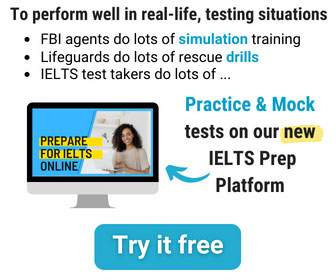Every IELTS Reading test, no matter Academic or General has tasks of this kind. Lots of students tell me (and I agree) that this is a very confusing task.
For those who have no idea what I am talking about, I’ll explain – this task has a statement, and your job is to say whether or not it is True, False or Not Given according to the reading passage.
How do you “attack” this question type? First learn the rule:
For example:
“Smoking is dangerous and can lead to cancer” – T, F, NG
1) If the text clearly says that “smoking is dangerous and leads to cancer” then the answer is T.
2) If the text says that “No research showed evidence that smoking is dangerous and leads to cancer” then the answer is F.
3) If the text says “The research included smokers of both genders of ages 30 to 45” and nothing else about smoking – your answer is NG.
Don’t make these mistakes:



Let me give you an example:
The original text is something like this: “Everyone should make a business plan during startup of a business. Business nature changes from time to time. One should update the business plan based on changes”.
The Question is: ‘A business plan needs to be created only for new businesses’.
How would you mark this? T, F or, NG ?
This looks like a False to me. Why: trap word “only” – the text says that EVERY new business needs a plan, not ONLY new business needs a plan.
Pingback: IELTS: Academic or General? | IELTS-Blog
Answer is True
This is one of the most confusing task for me during practice. I still don’t have a clue on how to approach this. No over thinking as you say would help I think. The more you logically think the more confused you will become. Weird.
Hi Prince, it helps if you approach this task in a sequential manner, because the answers appear in the text in the same order as questions, meaning answer to question 2 will appear after answer to question 1, and answer to question 3 will appear after answer to question 2. So this helps you to limit the amount of text you need to read to answer a certain question. Sometimes you can’t find the answer to Q1 but you can see where the answer of Q2 is located. That tells you that you need to read the text ABOVE answer to Q2, to find answer to Q1. True/False/Not Given requires close reading of limited portions of text (scanning/skimming doesn’t help much with this type of task).
i also agree with ur answer bcz it is a false
My problem in the ielts general training is mainly in the reading section, especially when I reach the third reading passage I become so tensed and confused and unable to give right answers. Even True, False and Not Given is quite tricky sometimes
Hi Patricia, have you got a strategy for how to approach the Reading section, or do you just open a practice test and start going over the text and trying to answer the questions? Because for every question type, even True/False/Not Given there’s a proper strategy that helps make the questions a lot less confusing, it helps you find the right paragraph to read, to answer the question. What is your strategy for True/False/Not Given?
NG
True
False
Answer is false
True